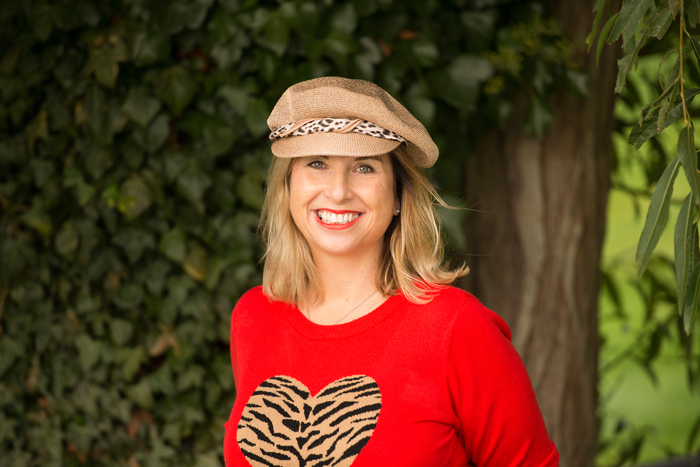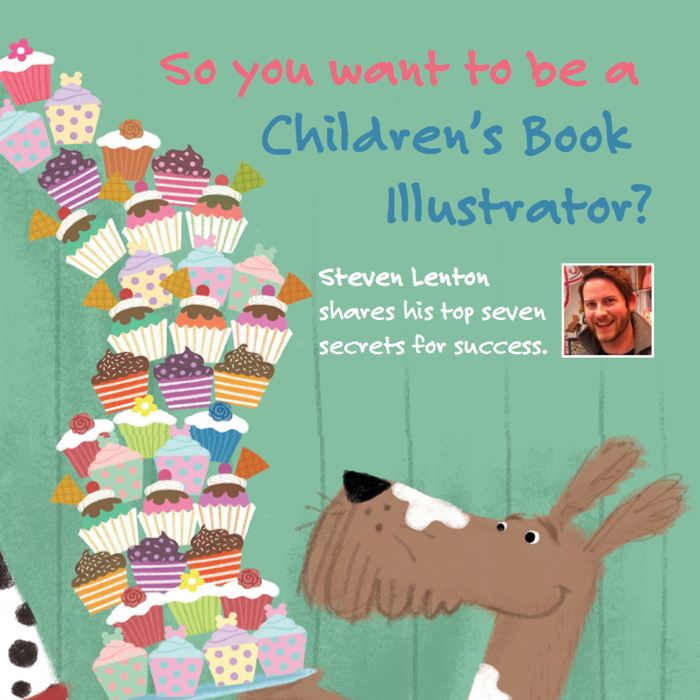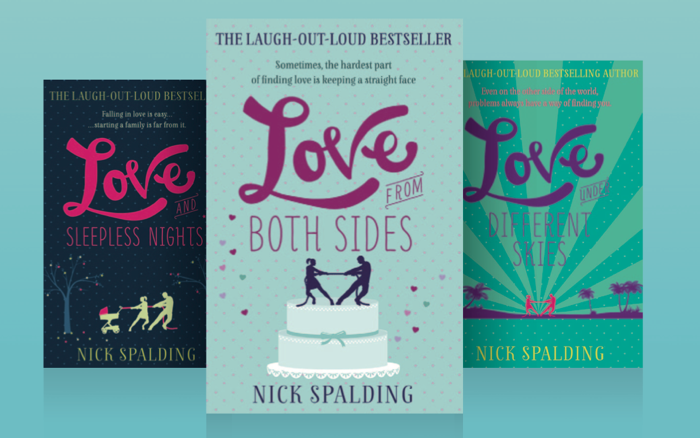INTERVIEW: Malorie Blackman
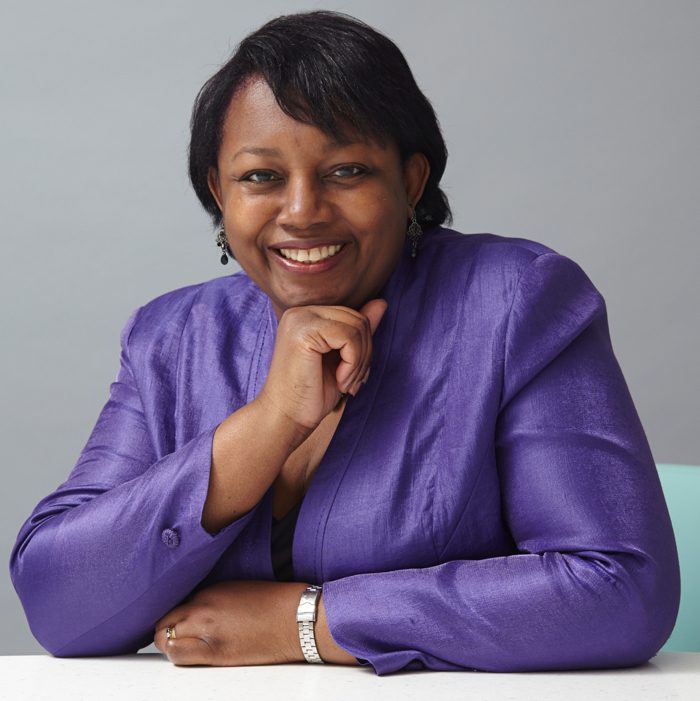
Photo © Random House Children’s Books
Malorie Blackman, the former Children’s Laureate and champion of children’s literature, talks to Lucy Coats about her path to publication and the obstacles she faced as a writer of colour.
This article first appeared in the Children’s Publishing issue of Publishing Talk Magazine (2014). This is a slightly edited, updated version. Malorie Blackman’s Noughts and Crosses is now a major BBC TV series.
[rt_reading_time label="Reading Time:" postfix="minutes" postfix_singular="minute"]
Almost everyone has by now heard of Malorie Blackman, OBE – Children’s Laureate, multi-award-winning writer, passionate champion of children’s literature for all ages, and described by The Times as ‘a national treasure’ – but it has been a long and sometimes difficult path to today’s public recognition.
Although she can’t remember a time when she didn’t make up stories and poems, Malorie was eight or nine before she started actually writing them down, in her school English workbooks. A passionate and omnivorous reader, she found it curious that there were no stories by black writers – and certainly none featuring a black girl like her – and it certainly never occurred to her that it was possible for her own stories to get published. Growing up, Malorie says: “There were always too many people ready to set my limits for me.” Told of her lifelong dream to teach, her careers adviser wouldn’t give her a university reference, and suggested she became a secretary instead, as “black people don’t become teachers.” It was only the discovery of Alice Walker’s The Colour Purple in her twenties which planted the seed of the idea that “maybe, just maybe, I too could become a writer.”
I made a deal with myself that I’d carry on writing and sending out my work to publishers until I reached my one thousandth rejection letter.
That process of ‘becoming a writer’ took eighty-two rejections (which represented eight books and two years of her life), but as Malorie herself admits: “I’m very stubborn. I made up my mind that I was going to be a writer and I wasn’t going to give up. I made a deal with myself that I’d carry on writing and sending out my work to publishers until I reached my one thousandth rejection letter. After which I would sit down and have a good long think about whether or not it was ever going to happen.”
As time went on, and the rejections piled up, she was encouraged by the changing tone of the editors’ letters, which became more detailed and longer. “They went from polite but unequivocal ‘not suitable for our list’ to one or two pages explaining why my stories weren’t working. I took it as a positive sign.” Eventually her first collection of short stories – Not So Stupid! was published in 1990 by the now defunct Women’s Press.
It took Malorie three published books before she got her first agent – Michael Thomas at A.M.Heath – but later she changed to Hilary Delamere at The Agency because they also specialised in film and TV contracts, and by then she knew she also wanted to write for TV, which she did very successfully for Byker Grove. “My advice to unagented authors would be to try and get recommendations regarding agents to approach,” she says, and she believes that working with an agent you trust and respect is incredibly important. “You need an agent who is prepared to tell it like it is and give you a verbal kick up the backside,” as well as someone who can “play hardball with publishers without the money aspect souring the relationship between author and editor. A good agent is also a great sounding board for ideas and a safety valve when you want to rant and wail.”
Malorie has worked with many editors over the years – she had eight different publishers in the early days – and she maintains that the editor/author relationship is a kind of negotiation where the editor will see the potential in your ‘vision’, and help you to realize it. However, she is very aware that publishers have other concerns, so sometimes the relationship can also be “about compromise and knowing when to choose your battles.” Her current editor, Annie Eaton at Random House, she describes as “brilliant – a really lovely woman, always tactful and positive, but still able to rein me in when a book seems to be going a little off-the-rails.”
Since the 90s, Malorie has written over sixty books for children of all ages, on a range of subjects from heart-transplants to hacking, but although most of the characters in her books are black it was not until Noughts and Crosses – which turned out to be her breakthrough book – that she chose to address racism. “I have a fear of being labelled – I don’t want to be ‘the X writer’. After 49 books I thought NOW I’m going to write about it – but I’m going to do it MY way. As I writer I have to keep pushing myself, trying new stuff – that’s how you grow.” Of the characters in that book, she says Callum is probably the one she’s closest to. “Things happened to me that happened to him.”
As a writer of colour in her early days of publication, Malorie faced considerable challenges and opposition from some editors, booksellers and librarians, who told her things like ‘no white child will read a book with a black child on the cover’ or ‘white children can’t relate to black issues’ or (even worse in her eyes) ‘the black experience’. She countered by telling them that she was writing about human issues, and to this day says that she still doesn’t know what “the one ‘black experience’ might be”. Such comments were, of course, utter nonsense, and more indicative of the views of the speaker than of any child.
We still need far more diversity in the voices of those published in the UK, and in the publishing industry.
Twenty-four years later things have improved, though Malorie still thinks there’s some way to go. “We still need far more diversity in the voices of those published in the UK, and in the publishing industry.” She’s right. There are almost no British-Chinese or British-Japanese protagonists in UK children’s literature, and very few books about disabled characters which don’t focus on the disability.
While publishers are keen to champion LGBT characters now, even as recently as 2010 when Malorie’s Boys Don’t Cry was published, a gay character like her protagonist Adam was unusual in a children’s book. She quotes Toni Morrison, author of The Bluest Eye: “If there’s a book that you want to read, but it hasn’t been written yet, then you must write it” and adds “but get out there and do your research – get your facts straight and get it as good as you can before sending it out.” As for children’s publishing – the fight for more diversity within its ranks is still an ongoing battle.
If there’s a book that you want to read, but it hasn’t been written yet, then you must write it. – Toni Morrison
As with every writer, Malorie’s ‘writing process’ is unique. For her, the gestation of each book is different – some sweep along from original idea to finish with no hiccups, others are a bit like running in a maze, with a lot of doubling back – and there is a whole computer file full of “ideas that not only haven’t blossomed, they haven’t even been planted!” She lists the cycle of emotions each of her books goes through as: “Inspiration, enthusiasm, vague unease, self-doubt, despair, procrastination, insight, renewed vigour, light at the end of the tunnel syndrome, jubilation, exhaustion, disappointed resignation, inspiration, enthusiasm.” However, sometimes an idea is only 90% there. If that happens, “no matter how many ways you twist it round and work on it, you reluctantly have to dump it and move on.”
Malorie is a plotter rather than a pantser, always plans out her books, and spends a great deal of time on her characters’ mini-biographies. “If I feel I’ve really got to grips with them and have created three-dimensional people who are real in my head, they don’t tend to steer me down blind alleys. I trust that if they do deviate from my initial plot idea, it’s for a very good reason.” Those essential mini-bios ensure that she knows exactly how her characters will think, feel and act in any given circumstances.
Malorie says she writes everywhere, and if she’s not on her computer, she’s scribbling in a notebook, but her favourite place to write is her attic. However, she also has an unusual way of solving plot and character problems. “If I’m stuck with a particular chapter or part of my book, I have been known to buy a return ticket, hop on a train and write. Then when I get to my destination, I take the first train home again and write. I’ve done that more than once to solve a writing dilemma and it always works.” There’s an absolute line-in-the-sand must, though – no interruptions. “I find that even little things throw me off my writing stride. I like to sit at my desk and really think and feel my way into my current story.” The distraction of a ringing phone, an email alert, or even an offer of a cuppa can jolt her out of the story and back to reality.
Social media is crucial to anyone writing for children or young adults because it makes the author more accessible.
There is, of course, also the distracting lure of social media – although Malorie maintains that YA fiction writers neglect that side of things at their peril, because “word of mouth and peer review among teens count for a great deal.” She thinks that social media has a role to play both in communicating content to a writer’s audience and advertising the books, and feels that having a social media presence is crucial to anyone writing for children or young adults because it makes the author more accessible.
She does try to limit how much time she spends on Facebook and Twitter, though. “If you’re not careful, they can take over your writing life as the interaction with others can be addictive because the response to whatever you write is immediate. I’d rather spend my day writing stories and poems, not tweeting!” Author visits to schools and libraries are another must – putting in the hard work of connecting with your audience personally, talking about the books, is a way of getting past the gatekeepers and getting your book directly to its intended audience. “If you get children interested in a story,” she says, “they will go for it.”
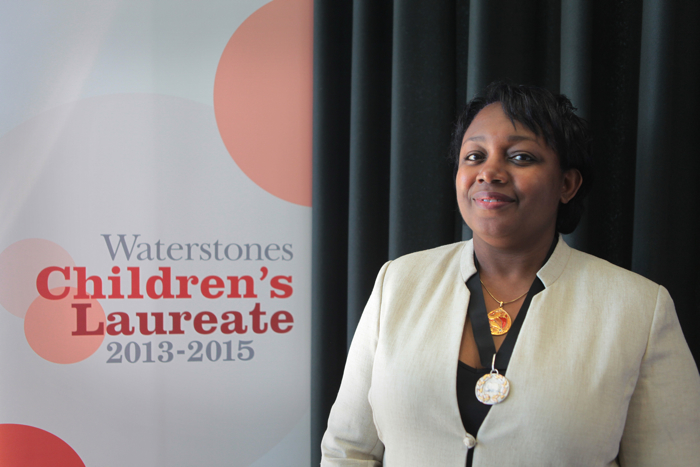
The main thing which has taken up most of Malorie’s time in recent years has been the Children’s Laureateship, which makes many demands on her time. She has to factor in interviews (she’s on radio and TV regularly), travelling, appearances in schools, libraries, at festivals and elsewhere – and endless speeches with all the research those entail. She says that being the Children’s Laureate “is a great honour but it’s like having a second full time job.” The right balance is hard to find, and she reckons she’ll probably crack it about a month before she hands over to the next Laureate in June 2015. Inevitably, her writing output has plummeted, and she worries that her publisher and agent “both want to kill me!”
Every book she writes now takes her so long to finish that she has to be absolutely sure that her whole heart and soul are in it before she commits to it. Nevertheless, Malorie feels that the positive far outweigh the negatives, and she has certainly brought her own passions about literacy and reading to the role and made it very much her own, focusing mainly on teenagers and secondary schools. “I have had the chance to meet some amazing people and to try and encourage more children, especially teenagers to read. I’ve already met so many wonderful children and teens as Children’s Laureate. That’s the most rewarding part of what I do.”
Write what you feel passionate about – because publishers don’t always know what the next trend is.
The first UK Young Adult Literature Convention (YALC) took place in July 2014. Curated and directed by Malorie, its huge success with over fifty authors involved is testament to just some of her hard work in that area.
Asked to give advice for new and aspiring writers, Malorie is very definite. Write what you feel passionate about – because publishers don’t always know what the next trend is. “If you have a burning desire to write something then write it,” but she is also adamant that you must do your research and know your market. In practice, this means going to London Book Fair, seeing what’s on the stands, finding out what’s selling and what’s not, asking librarians and booksellers what is popular and why, as well as collecting publishers catalogues.
Once a book is finished, she says, you must “always get on with the next thing.” She herself is still learning new things about her craft. “If I said I wasn’t, that could only mean a) I’m already perfect or b) I’m not interesting in improving. I can assure you neither of those is true!”
Malorie Blackman’s top writing tips
- Be true to yourself and your vision when it comes to writing, but don’t be afraid to take advice and to compromise where necessary.
- Choose your editorial battles carefully, and remember, you can’t please all the people all the time!
- Get out there and do your research. Get your facts straight and make your manuscript as good as you can before sending it out.
- Don’t be afraid to move out of your comfort zone more than once in a while. That’s how you stretch and grow as a writer.
- Write from the heart as well as the head.
 MALORIE BLACKMAN has written over sixty books and is acknowledged as one of today’s most imaginative and convincing writers for young readers. She has been awarded numerous prizes for her work, including the Red House Children’s Book Award and the Fantastic Fiction Award. Malorie has also been shortlisted for the Carnegie Medal. In 2005 she was honoured with the Eleanor Farjeon Award in recognition of her contribution to children’s books, and in 2008 she received an OBE for her services to children’s literature. Malorie was the Children’s Laureate 2013–15. To find out more, visit www.malorieblackman.co.uk or follow her on Twitter at @malorieblackman.
MALORIE BLACKMAN has written over sixty books and is acknowledged as one of today’s most imaginative and convincing writers for young readers. She has been awarded numerous prizes for her work, including the Red House Children’s Book Award and the Fantastic Fiction Award. Malorie has also been shortlisted for the Carnegie Medal. In 2005 she was honoured with the Eleanor Farjeon Award in recognition of her contribution to children’s books, and in 2008 she received an OBE for her services to children’s literature. Malorie was the Children’s Laureate 2013–15. To find out more, visit www.malorieblackman.co.uk or follow her on Twitter at @malorieblackman.

